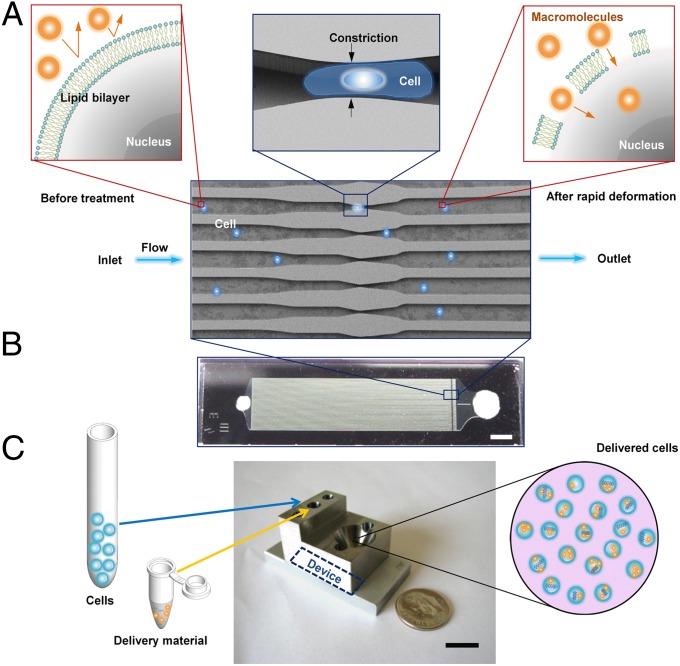Fig. 1.
Delivery mechanism and system design. (A) Illustration of delivery hypothesis whereby the rapid deformation of a cell, as it passes through a microfluidic constriction, generates transient membrane holes. Includes an electron micrograph of current parallel channel design with blue cells as an illustration. (B) Image of a finished device consisting of Pyrex bound to silicon for sealing. (Scale bar: 2 mm.) (C) Illustration of the delivery procedure in which cells and delivery material are mixed in the inlet reservoir, run through the chip, and collected in the outlet reservoir. The mounting system consists of stainless-steel and aluminum parts interfaced to the chip by inert O rings. (Scale bar: 10 mm.)

